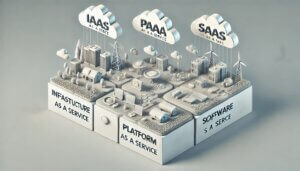This domain is foundational to understanding cloud security, as it covers the essential concepts, principles, and structures of cloud computing. Below is an in-depth look at the key topics within this area.
1. Cloud Computing Fundamentals
Cloud computing is a model that enables on-demand access to shared computing resources such as networks, servers, storage, applications, and services. The main characteristics of cloud computing include:
- On-demand self-service: Users can access computing resources as needed, without requiring human intervention from service providers.
- Broad network access: Resources are available over the network and can be accessed from a variety of devices.
- Resource pooling: Computing resources are pooled to serve multiple consumers using a multi-tenant model.
- Rapid elasticity: Resources can be rapidly scaled up or down according to demand.
- Measured service: Cloud systems automatically control and optimize resource use by leveraging a metering capability.
2. Cloud Service Models
Cloud service models define the layers of services provided by cloud providers. The three primary models are:
- Infrastructure as a Service (IaaS): Provides virtualized computing resources over the internet. Users manage the operating systems, storage, and deployed applications but rely on the provider for networking and servers. Examples: AWS EC2, Google Compute Engine.
- Platform as a Service (PaaS): Offers hardware and software tools over the internet, typically for application development. Users can develop, run, and manage applications without worrying about the underlying infrastructure. Examples: Google App Engine, Microsoft Azure.
- Software as a Service (SaaS): Delivers software applications over the internet, on a subscription basis. The provider manages the infrastructure, software, and data. Users access the software via a web browser. Examples: Google Workspace, Microsoft 365.
3. Cloud Deployment Models
The deployment model defines how the cloud infrastructure is built and operated. The four main types are:
- Public Cloud: Infrastructure is owned by a cloud service provider and made available to the general public. This model is cost-effective but offers less control over security and data.
- Private Cloud: Infrastructure is operated solely for a single organization. It offers greater control and security, but at a higher cost.
- Hybrid Cloud: A combination of public and private clouds, allowing data and applications to be shared between them. This model provides flexibility and optimized resource use.
- Community Cloud: Infrastructure is shared by several organizations with common concerns (e.g., mission, security requirements). It is managed by one or more of the organizations or a third party.
4. Cloud Reference Architecture
A cloud reference architecture is a blueprint or framework that provides a common language and standards for cloud computing. It includes:
- Service Catalog: A list of services offered to users.
- Service Orchestration: The coordination of multiple services to perform complex tasks.
- Resource Abstraction and Control: The layer that virtualizes physical resources and manages their use.
- Security: Ensures confidentiality, integrity, and availability of data and services.
5. Key Security Considerations
When designing and deploying cloud architectures, several security principles must be considered:
- Shared Responsibility Model: Cloud security is a shared responsibility between the cloud provider and the customer. Providers secure the cloud infrastructure, while customers are responsible for securing their data, applications, and networks.
- Data Protection: Ensuring that data is protected in transit, at rest, and in use, through encryption, access controls, and other security measures.
- Identity and Access Management (IAM): Implementing robust IAM policies to control who has access to cloud resources and what actions they can perform.
- Compliance: Ensuring that the cloud environment adheres to relevant laws, regulations, and standards.
Real-World Scenario: Designing a Secure Cloud Architecture
Imagine a financial institution moving its customer-facing applications to the cloud. The architecture must ensure:
- Secure Data Storage: Using encryption for data at rest.
- Access Control: Implementing strong IAM policies to restrict access to sensitive financial data.
- Regulatory Compliance: Ensuring the cloud setup meets financial regulations, such as those set by the PCI DSS for handling credit card data.
- Resilience: Designing the architecture to be fault-tolerant with backup and disaster recovery solutions.
Next Steps
Understanding cloud concepts, architecture, and design is crucial for developing secure and efficient cloud environments. To deepen your knowledge, you can explore specific cloud service providers (like AWS, Azure, or Google Cloud) to see how they implement these concepts in real-world scenarios.




